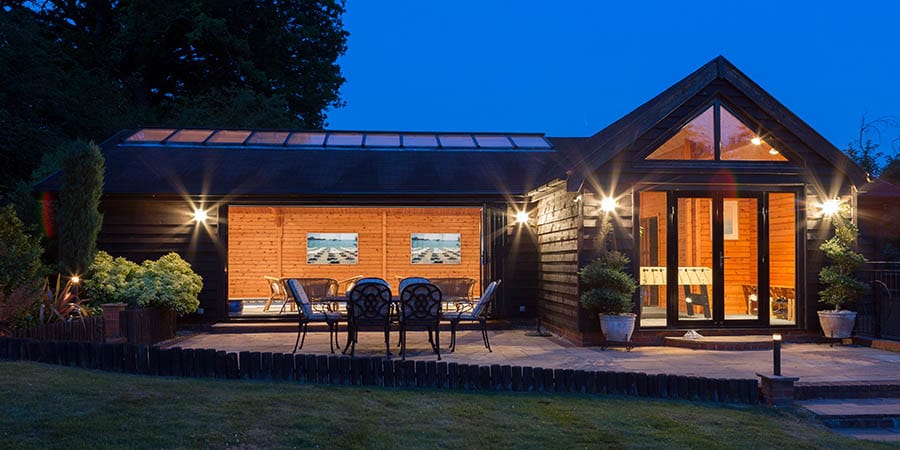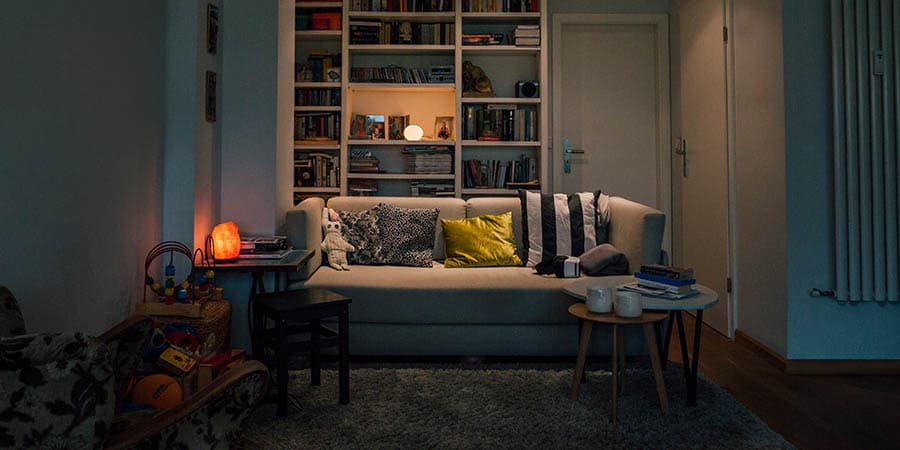One burglary occurs every 22.6 seconds. With home invasions occurring so frequently, it's normal to want to take extra measures to ensure the safety of your family. There are obvious deterrents, such as home security systems, but can lighting possibly be a tool for preventing burglaries?
Authorities have often suggested lighting can be used to help to keep homes safe. But, many homeowners are questioning whether that is actually an effective burglary prevention strategy. Does lighting deter burglars because they fear identification or do lights simply let the burglar have a look inside so they can identify which items to take? As you look down your street to see if certain homes are illuminated, you might be wondering:
- What makes a home a potential target?
- What does lighting have to do with home safety and preventing burglary?
- Is it safe to leave the lights on all night?
- How can I modify my lighting to improve the security of my home?
Take a look at the following data and burglary prevention tips.


Do outside lights deter burglars?
One perspective to consider when evaluating the presence of outdoor lighting for burglary deterrence is the role of motivational factors. The data suggests that most burglaries are the result of opportunity, rather than a meticulous plan. For example:
- Most burglars live within two miles of the victim.
- The average burglary takes only minutes (some taking as little as 90 seconds).
- Most invaders are male and less than 25 years old.
- The average burglar also has a record for other offenses, including assault and drug-related crimes.
This data indicates that typical burglars strike at homes they consider to be easy targets to make a quick grab and they don't even go very far from their home base to accomplish that.
One study surveyed convicted burglars to get their take on the subject. The research was conducted to gauge offender motivations and burglary deterrents. KGW8 News surveyed 86 burglars and collected their responses.
The burglars in this particular study did not come to a clear consensus on whether lighting was a sufficient deterrent: "Responses were mixed regarding lights on in a home. Some said it was a deterrent. But one burglar said the combination of lights on and blinds closed created an attractive location."
Every burglar who took part in the study said that they would knock on the front door prior to attempting a break-in and almost all would reconsider breaking into a home if a car was in the driveway.
Responses and data regarding average burglaries suggest that the most important element for burglary prevention is a presence within the home.
Burglars prefer to break in when the house is empty. Cars in the driveway and residents answering doors was enough to ward off some seasoned invaders. Most indicated a preference for working quickly and quietly and leaving before anyone even knew they were there.
In fact, according to FBI data, most break-ins occur during the day between 10 AM and 3 PM because it is when people are least likely to be home. For the average break-in, the presence of lighting is not even a factor as daylight would overshadow any security lighting.
So do outdoor lights deter crime? They can, but only for a small portion of potential burglaries.
The key to using lighting as a burglar deterrent is to ensure your security lighting design seems natural, and not just on 24/7. We'll cover that in the next section
Using this information, there are a few ways you can use lighting as part of your crime prevention strategy.


How to use lights to deter burglars
Wondering how to deter burglars at night? The best way to use your lighting as a burglary deterrent is to make it seem like someone is home.
- Use indoor lights to mimic real behavior and suggest someone is home: Set your lights to turn on and off at normal, irregular intervals to give the appearance that your home is occupied. Wondering if you should leave outside lights on at night? Don't. Leaving your lights on all night doesn't send the message that your home. Instead, choose times you would normally use lighting during the evenings. If you use timers, set them to turn on and off in different rooms to give the appearance that someone is moving around your home.
- Use smart lighting for remote control of lights: Leaving your Smart security light bulbs gives you the ability to turn lights on and off even when you aren't inside. Turn your lights on at random times to fall in line with predictable movements and alternate lighting in different rooms. If you plan to employ this method, make sure your curtains are closed and you aren't simply giving anyone on the street an open view into your empty home. Tie this in with a video doorbell and anyone knocking at your door will think you're really there.
- Select outdoor motion sensor lighting for your home: These lights are bright and will illuminate your exterior doors, whether it be a flood light, landscape lighting or other outdoor security light. The sudden porch light will also alert any neighbors to suspicious activity outside your home. While you may not have much control over street lighting, the more light your neighborhood has at night, the more obstacles for a potential burglar. If you don't have adequate street lighting in your neighborhood, consider bringing it up in your next HOA meeting as a way to help combat residential crime.
- Use your alarm system to support your motion sensor light strategy: Regardless of how you program lights or choose to use security lighting to keep your home safe, you should always make sure that your security system is set to help keep your home safe. Even if your lighting strategy does not have the intended impact for burglary prevention, you can rest easy knowing your alarms will sound if an intruder finds their way in.
Smart plugs are another option for remotely controlling lighting and electronics, such as TVs. Smart plugs offer an alternative to smart lighting for remotely managing electronics and lighting. These can be turned on and off randomly to make your home seem occupied.
Security cameras can help identify when lighting needs to be adjusted: Most modern surveillance cameras have live-streaming capabilities with custom alerts and notifications. If you notice any suspicious characters on your property via streaming, use your smart lighting or smart plugs to turn on electronics and lighting to give the impression of a presence.
Leaving on lights at all times doesn't seem to be an effective way to deter crimes. With a little planning and some home automation equipment, you can use lighting to your advantage and get better peace of mind.
Source:
https://ucr.fbi.gov/crime-in-the-u.s/2017/crime-in-the-u.s.-2017/topic-pages/crime-clock
Related Articles:


